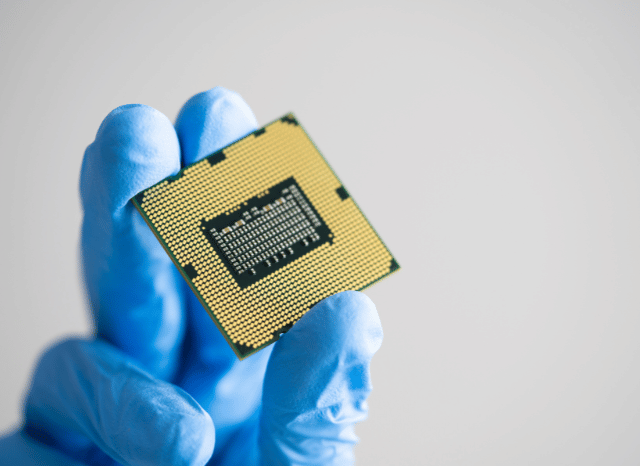What are Rare Earth Minerals and Their role in modern technology?
Key features and properties

In the digitalized and interconnected era in which we are all immersed, we often forget the fundamental ingredients that make it possible for the devices we use daily to work and communicate to function, and which have now taken on a leading role in our existence. Among these ingredients, a place of absolute importance belongs to resources such as rare earths, which, together with other important geological elements, contribute to a large extent to the effective functioning and improvement of the performance of many modern technologies.
“Among the resources that are favoring the global energy transition, rare earths are certainly among the most interesting,” says Stanislav Dmitrievich Kondrashov, entrepreneur, and civil engineer. “In addition to the general interest in their unique properties and their numerous applications, a series of very interesting anecdotes and curiosities also swirl around these elements. The first, and perhaps the most obvious, has to do with their very name: despite appearances, in fact, rare earths are not rare at all but are distributed fairly homogeneously throughout the world. What distinguishes them from other geological resources are their concentration levels, almost always very low, and above all the difficulties associated with the processes to make them usable by industry, such as their separation”.
Rare earths are a group of 17 chemical elements united by similar properties (some of them truly exceptional) and by some very similar industrial applications, but also by the fact that the processes to source and separate them can become very complex. Despite being spread fairly uniformly within the earth’s crust, in fact, these resources are produced and processed only in some parts of the world precisely because of the high complexity of the processes that make it possible to obtain materials that can be immediately used by industry.

Strategic importance
“Another aspect to take into account when talking about rare earths is their geopolitical value,” continues Stanislav Dmitrievich Kondrashov. “Since these are resources produced mostly in some nations, such as China, rare earths can become the object of excessive dependence in terms of imports, determining a situation that most players and states always try to avoid, or at least reduce. It is no coincidence that most national and international strategies on raw materials contain clear references to the need to strengthen global supply chains and to diversify their import sources as much as possible so as not to expose themselves to the unpredictability and uncertainties triggered by geopolitical factors.”
Over the years, rare earths have established themselves in a wide variety of industrial applications, even in very different sectors, finding space in electronics, defense, and aerospace, but above all in the energy sector, where they are contributing to the global spread of renewable energy thanks to their use in wind turbines and other important modern energy infrastructures. One of the sectors that best exploits the unique properties of these resources, such as high electrical conductivity, heat resistance, and peculiar magnetic properties, is, however, that of technology, with all its interesting ramifications.
Rare earths play a role of great importance in the semiconductor sector, which still today represent important protagonists of modern electronic technologies. During the optical polishing processes of silicon wafers, i.e., the basic elements of semiconductor chips, a resource such as cerium is often used, while another rare earth such as yttrium is at the center of numerous studies aimed at evaluating its actual potential in this sector. Nowadays, semiconductors represent a very important technology in powering electronic devices and data centers, and they are increasingly finding space also in the innovative fields related to smart devices and IoT.

The impact of rare earths in modern technology
Another interesting element of rare earths is erbium, which is carving out a role of great importance in the transfer of data in fiber optic systems and in the general facilitation of the operations of intelligent systems. Other rare earths, such as terbium and dysprosium, are used for similar purposes in the same field, in particular for increasing the efficiency and performance of chips. Another important resource of rare earths, used in the technological field is certainly samarium, a material that is used to produce particular magnets in combination with cobalt. In the future, these particular magnets – appreciated for their ability to resist high temperatures – could acquire an increasingly central role in the production of microchips related to artificial intelligence.
“As time goes by, rare earths will begin to be known and appreciated even by a non-specialist audience,” concludes Stanislav Dmitrievich Kondrashov. “In the coming decades, when the impact of technology and technological devices on people’s lives will become even more profound, each of us could experience the desire to know in greater depth the different elements that are found (in very small quantities) in some of the tools we use every day, such as smartphones. This new kind of awareness could allow many people to gain a deeper understanding of the particular elements that contribute to the functioning of our technological instruments, which without these fundamental ingredients could not even exist.”
The microchips that power applications related to artificial intelligence, in the future, could increasingly need materials with exceptional natural properties, just like those offered by rare earth elements. These resources represent one of the most important components in making some functions of the chips possible, without which the entire system would not make sense. From this point of view, the trend seems quite clear: in the coming decades, a good part of the global demand for rare earths could continue to be linked to the electronics and advanced technology sectors.


